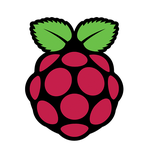Raspberry Pi Compute Module 5: A Compact Powerhouse for Modern Applications
November 28, 2024, 11:30 am

Location: United Kingdom, England, South Hams
Employees: 51-200
Founded date: 2008
Total raised: $212.12M

Location: United Kingdom, England, South Hams
Employees: 51-200
Founded date: 2008
Total raised: $103.17M
The Raspberry Pi Compute Module 5 has arrived, and it’s making waves in the tech community. This latest offering from Raspberry Pi is not just a smaller version of the Raspberry Pi 5; it’s a game-changer. With its compact design and robust capabilities, it’s tailored for embedded systems and Internet of Things (IoT) applications.
Imagine a tiny powerhouse that fits in the palm of your hand. That’s the Compute Module 5. Measuring just 55 x 40 x 4.7 mm, it’s designed to fit into tight spaces without sacrificing performance. This is a board that speaks to the heart of modern technology—small, efficient, and powerful.
At its core, the Compute Module 5 is built on the Broadcom BCM2712 chip. This quad-core processor runs at 2.4 GHz, delivering a punchy performance that rivals larger systems. Coupled with the VideoCore VII GPU, it can handle dual 4K displays at 60 frames per second. This isn’t just a toy; it’s a serious contender in the computing arena.
The Compute Module 5 comes in various configurations. Users can choose from 2 GB, 4 GB, or 8 GB of LPDDR4X-4267 RAM. Storage options range from 16 GB to 64 GB of eMMC, with a Lite version that offers no storage. This flexibility allows developers to tailor the module to their specific needs, whether for a simple project or a complex application.
Price-wise, the Compute Module 5 is accessible. Starting at $45 for the Lite version, it scales up based on RAM and storage options. The pricing structure is straightforward, making it easy for developers to budget their projects. For those who want the complete package, a bundle including the Compute Module, IO Board, metal case, and other accessories is available for $130. This all-in-one solution simplifies the purchasing process and ensures compatibility.
But what about connectivity? The Compute Module 5 supports Wi-Fi 802.11ac and Bluetooth 5.0, ensuring that it can connect to a wide range of devices. It also features two USB 3.0 ports, gigabit Ethernet, and a PCIe 2.0 interface. This array of options means that developers can create versatile applications without being hampered by connectivity issues.
The IO Board is a standout accessory. Priced at $24, it enhances the Compute Module’s capabilities by providing additional ports and interfaces. It includes 40 GPIO pins, two full-sized HDMI 2.0 ports, and multiple MIPI DSI/CSI-2 connectors. This board transforms the Compute Module into a more user-friendly platform, making it easier to prototype and develop projects.
The design philosophy behind the Compute Module 5 is clear: make it easier for developers to innovate. The modular approach allows for customization and scalability. It’s like building with Lego blocks—each piece can be tailored to fit the project’s needs. This flexibility is crucial in today’s fast-paced tech landscape.
Moreover, the Compute Module 5 is not just for hobbyists. It’s a serious tool for professionals. Industries such as automation, robotics, and smart home technology can leverage its capabilities. The compact size means it can be integrated into devices where space is at a premium. Think of it as the Swiss Army knife of computing—small but packed with features.
Raspberry Pi has a history of empowering developers. The Compute Module 5 continues this tradition. It invites creativity and experimentation. Whether you’re a seasoned engineer or a curious beginner, this module opens doors to new possibilities.
In addition to the hardware, Raspberry Pi offers a wealth of resources. Documentation, forums, and community support are readily available. This ecosystem fosters collaboration and knowledge sharing. It’s not just about the product; it’s about building a community of innovators.
Looking ahead, Raspberry Pi plans to release a version of the Compute Module 5 with 16 GB of RAM in 2025. This forward-thinking approach ensures that the product remains relevant as technology evolves. It’s a commitment to continuous improvement and user satisfaction.
In conclusion, the Raspberry Pi Compute Module 5 is more than just a compact computer. It’s a versatile platform that caters to the needs of modern developers. With its powerful specifications, flexible configurations, and robust support, it’s poised to become a staple in the tech toolkit. Whether for hobby projects or professional applications, the Compute Module 5 is ready to take on the challenge. Embrace the future of computing—small, powerful, and full of potential.
Imagine a tiny powerhouse that fits in the palm of your hand. That’s the Compute Module 5. Measuring just 55 x 40 x 4.7 mm, it’s designed to fit into tight spaces without sacrificing performance. This is a board that speaks to the heart of modern technology—small, efficient, and powerful.
At its core, the Compute Module 5 is built on the Broadcom BCM2712 chip. This quad-core processor runs at 2.4 GHz, delivering a punchy performance that rivals larger systems. Coupled with the VideoCore VII GPU, it can handle dual 4K displays at 60 frames per second. This isn’t just a toy; it’s a serious contender in the computing arena.
The Compute Module 5 comes in various configurations. Users can choose from 2 GB, 4 GB, or 8 GB of LPDDR4X-4267 RAM. Storage options range from 16 GB to 64 GB of eMMC, with a Lite version that offers no storage. This flexibility allows developers to tailor the module to their specific needs, whether for a simple project or a complex application.
Price-wise, the Compute Module 5 is accessible. Starting at $45 for the Lite version, it scales up based on RAM and storage options. The pricing structure is straightforward, making it easy for developers to budget their projects. For those who want the complete package, a bundle including the Compute Module, IO Board, metal case, and other accessories is available for $130. This all-in-one solution simplifies the purchasing process and ensures compatibility.
But what about connectivity? The Compute Module 5 supports Wi-Fi 802.11ac and Bluetooth 5.0, ensuring that it can connect to a wide range of devices. It also features two USB 3.0 ports, gigabit Ethernet, and a PCIe 2.0 interface. This array of options means that developers can create versatile applications without being hampered by connectivity issues.
The IO Board is a standout accessory. Priced at $24, it enhances the Compute Module’s capabilities by providing additional ports and interfaces. It includes 40 GPIO pins, two full-sized HDMI 2.0 ports, and multiple MIPI DSI/CSI-2 connectors. This board transforms the Compute Module into a more user-friendly platform, making it easier to prototype and develop projects.
The design philosophy behind the Compute Module 5 is clear: make it easier for developers to innovate. The modular approach allows for customization and scalability. It’s like building with Lego blocks—each piece can be tailored to fit the project’s needs. This flexibility is crucial in today’s fast-paced tech landscape.
Moreover, the Compute Module 5 is not just for hobbyists. It’s a serious tool for professionals. Industries such as automation, robotics, and smart home technology can leverage its capabilities. The compact size means it can be integrated into devices where space is at a premium. Think of it as the Swiss Army knife of computing—small but packed with features.
Raspberry Pi has a history of empowering developers. The Compute Module 5 continues this tradition. It invites creativity and experimentation. Whether you’re a seasoned engineer or a curious beginner, this module opens doors to new possibilities.
In addition to the hardware, Raspberry Pi offers a wealth of resources. Documentation, forums, and community support are readily available. This ecosystem fosters collaboration and knowledge sharing. It’s not just about the product; it’s about building a community of innovators.
Looking ahead, Raspberry Pi plans to release a version of the Compute Module 5 with 16 GB of RAM in 2025. This forward-thinking approach ensures that the product remains relevant as technology evolves. It’s a commitment to continuous improvement and user satisfaction.
In conclusion, the Raspberry Pi Compute Module 5 is more than just a compact computer. It’s a versatile platform that caters to the needs of modern developers. With its powerful specifications, flexible configurations, and robust support, it’s poised to become a staple in the tech toolkit. Whether for hobby projects or professional applications, the Compute Module 5 is ready to take on the challenge. Embrace the future of computing—small, powerful, and full of potential.